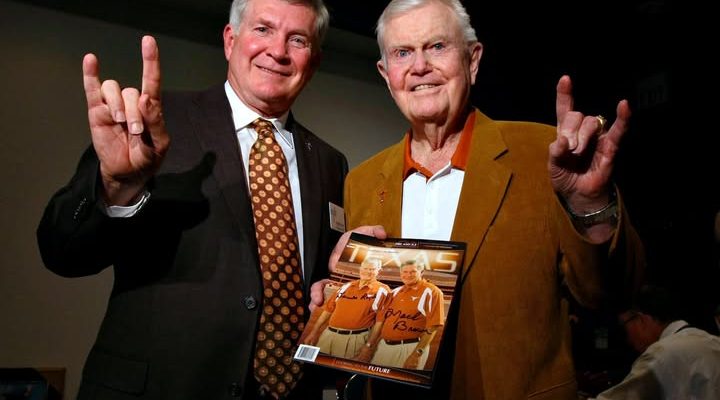**Legend of the Longhorns: Darrell Royal’s 20-Year Reign as Texas Head Coach Cemented His Legacy as One of the Greatest**
In the storied history of college football, few coaches have left as indelible a mark as Darrell Royal. Over his 20-year tenure as head coach of the Texas Longhorns, Royal transformed a struggling program into a national powerhouse, redefined offensive strategy, and cemented his place among the sport’s all-time greats. His legacy is not just measured in wins and championships—though there were plenty—but in the way he shaped the culture of Texas football and influenced generations of players, coaches, and fans.
When Royal arrived in Austin in 1957, the Longhorns were far from the dominant force they would soon become. The program had endured a decade of mediocrity, with only two winning seasons in the previous ten years. But Royal, a sharp-minded Oklahoman with a knack for leadership, saw potential where others saw only frustration. He brought discipline, innovation, and an unshakable belief in the power of teamwork. By his second season, Texas was back in the Cotton Bowl, and by 1959, Royal had delivered the program’s first Southwest Conference championship in a decade.
Royal’s success was built on more than just X’s and O’s—though his football intellect was undeniable. He was a master motivator, instilling in his players a sense of pride and accountability. His famous “DKRisms”—quips like “Dance with the one who brung ya” and “Luck is what happens when preparation meets opportunity”—became gospel in the locker room. He demanded excellence, but he also fostered loyalty. Players didn’t just play for him; they believed in him.
Perhaps Royal’s greatest contribution to the game was his role in popularizing the Wishbone offense. Along with assistant Emory Bellard, Royal refined the triple-option attack in the late 1960s, unleashing a system that would dominate college football for years. The Wishbone was perfectly suited to Texas’ personnel, emphasizing speed, precision, and misdirection. In 1968, the Longhorns debuted the offense midseason, and the results were immediate: they won six straight games, including a dramatic 36-13 rout of rival Oklahoma. The following year, Texas went 11-0, claiming Royal’s first national championship.
That 1969 season remains one of the most iconic in college football history. Led by quarterback James Street and a ferocious defense, the Longhorns battled through a gauntlet of top-ranked opponents, culminating in the “Game of the Century” against Arkansas. In a nationally televised showdown of undefeated teams, Texas rallied from a 14-0 deficit to win 15-14, with President Richard Nixon famously declaring them national champions in the locker room. A Cotton Bowl victory over Notre Dame sealed the perfect season, etching Royal’s name into legend.
Royal’s Longhorns would claim two more national titles (1970 and 1973) and 11 Southwest Conference championships during his tenure. His teams were known for their toughness, adaptability, and clutch performances in big games. Whether it was the dramatic comeback against Arkansas or the suffocating defense that stifled Alabama in the 1973 Cotton Bowl, Royal’s squads always rose to the occasion.
Yet, for all his on-field success, Royal’s impact extended far beyond wins and losses. He was a pioneer in racial integration, recruiting Texas’ first Black scholarship player, Julius Whittier, in 1969—a move that broke barriers in the deeply conservative Southwest Conference. He also emphasized academics, ensuring his players left Austin with more than just football memories. His influence shaped future coaching giants like Mack Brown and Gene Stallings, who carried his lessons into their own careers.
By the time Royal retired in 1976 at just 52 years old, he had amassed a 167-47-5 record, making him the winningest coach in Texas history—a distinction he still holds today. But his departure was as dignified as his career. Never one to overstay his welcome, Royal stepped away on his own terms, leaving behind a program that was synonymous with excellence.
In the decades since, Royal’s legend has only grown. The stadium where the Longhorns play bears his name, and his presence still looms over Texas football. His philosophies—on leadership, preparation, and integrity—remain timeless. More than just a coach, Darrell Royal was a teacher, a mentor, and a symbol of what college football could be at its best.
The numbers alone—three national titles, 20 bowl games, an .774 winning percentage—place him among the sport’s elite. But Darrell Royal’s true legacy lies in the way he embodied the spirit of Texas football: proud, innovative, and unyielding. He didn’t just build a winning program; he built a standard. And for that, he will forever be remembered as one of the greatest to ever walk the sidelines.



